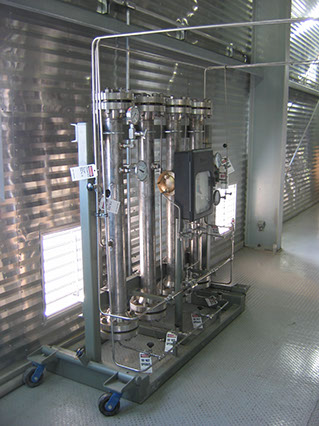RESEARCH AND DEVELOPMENT /
PROCESS DEVELOPMENT SERVICES
Trimeric has worked on a variety of projects in support of new process development or selection. Trimeric’s staff has extensive experience designing, advising clients who are constructing, and operating bench-scale and laboratory-scale systems, both at Trimeric and prior to joining Trimeric.
Typical activities for Process Research and Development projects include:
- Planning, designing, assembling, and operating of complete test units at laboratory-, bench-, and demonstration-scales.
- Performance proof testing, including extended-duration runs for bench- and demonstration-scale units.
- Research program planning, from concept definition through program development.
- Development of user-friendly computer applications for vapor liquid equilibrium from test data.
- Preparation of data to support patent applications.
- Hazards and Operability (HAZOP) studies for new or modified processes.
- Facilitation of Process Hazard Analysis (PHA) meetings, or participation as process expert.
Project Examples:
- Developed processes from concept through pilot and/or commercial scale (e.g. R-BTEX, CrystaSulf, Double Loop, BSRP).
- Planned, designed, provided process engineering services during construction, and tested multiple large demonstration units. (e.g. SulFerox, CrystaSulf, R-BTEX, Contactor for H2S scavenging, glycol additives test system).
- Contributed to the design of a pilot-scale flue gas desulfurization (FGD) unit to study the absorption of trace pollutants from flue gas for a Department of Energy project studying the absorption of trace pollutants from the flue gas. The pilot plant was fed by a slipstream vent in a coal fired power plant, and Trimeric staff members both managed the pilot test program and provided on-site operations support.
- Measured solubility behavior for water in solvents applicable to gas dehydration.
- Designed and tested a continuous bench-scale system to evaluate the adsorption of high-boiling sulfur compounds from commercial jet fuel and various regeneration options for the sorbents (~0.3 kg/hr feed rate). The data collected were used for the conceptual design of a desulfurization system for a military mobile auxiliary power unit using fuel cells powered by JP-8 (similar to jet fuel).


